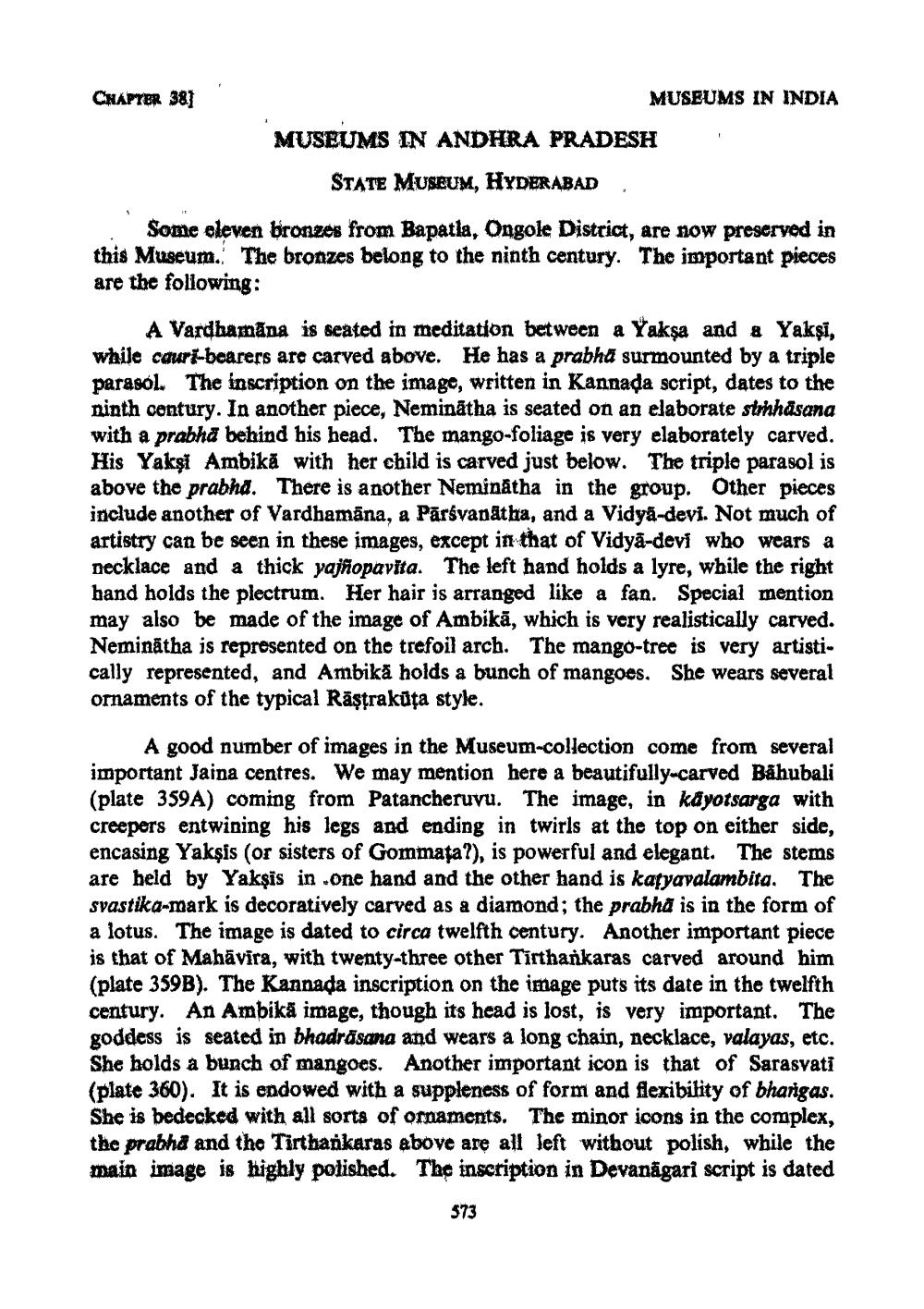________________
CHAPTER 38)
MUSEUMS IN INDIA MUSEUMS IN ANDHRA PRADESH
STATE MUSEUM, HYDERABAD Some eleven bronzes from Bapatia, Ongole District, are now preserved in this Museum. The bronzes belong to the ninth century. The important pieces are the following:
A Vardhamana is seated in meditation between a Yaksa and a Yakşī. while cauri-bearers are carved above. He has a prabha surmounted by a triple parasol. The inscription on the image, written in Kannada script, dates to the ninth century. In another piece, Neminātha is seated on an elaborate simhasana with a prabha behind his head. The mango-foliage is very elaborately carved. His Yakşi Ambikā with her child is carved just below. The triple parasol is above the prabha. There is another Neminátha in the group. Other pieces include another of Vardhamāna, a Pārsvanatha, and a Vidya-devi. Not much of artistry can be seen in these images, except in that of Vidyā-devi who wears a Decklace and a thick yajñopavita. The left hand holds a lyre, while the right hand holds the plectrum. Her hair is arranged like a fan. Special mention may also be made of the image of Ambikā, which is very realistically carved. Neminātha is represented on the trefoil arch. The mango-tree is very artistically represented, and Ambikā holds a bunch of mangoes. She wears several ornaments of the typical Rāştrakūta style.
A good number of images in the Museum-collection come from several important Jaina centres. We may mention here a beautifully-carved Bahubali (plate 359A) coming from Patancheruvu. The image, in käyotsarga with creepers entwining his legs and ending in twirls at the top on either side, encasing Yakşis (or sisters of Gommata?), is powerful and elegant. The stems are held by Yaksis in one hand and the other hand is katyavalambita. The svastika-mark is decoratively carved as a diamond; the prabha is in the form of a lotus. The image is dated to circa twelfth century. Another important piece is that of Mahāvira, with twenty-three other Tirtharkaras carved around him (plate 359B). The Kannada inscription on the image puts its date in the twelfth century. An Ambika image, though its head is lost, is very important. The goddess is seated in bhadrâsana and wears a long chain, necklace, valayas, etc. She holds a bunch of mangoes. Another important icon is that of Sarasvati (plate 360). It is endowed with a suppleness of form and flexibility of bharigas. She is bedecked with all sorts of ornaments. The minor icons in the complex, the prabha and the Tirtharkaras above are all left without polish, while the main image is highly polished. The inscription in Devanagari script is dated
573




